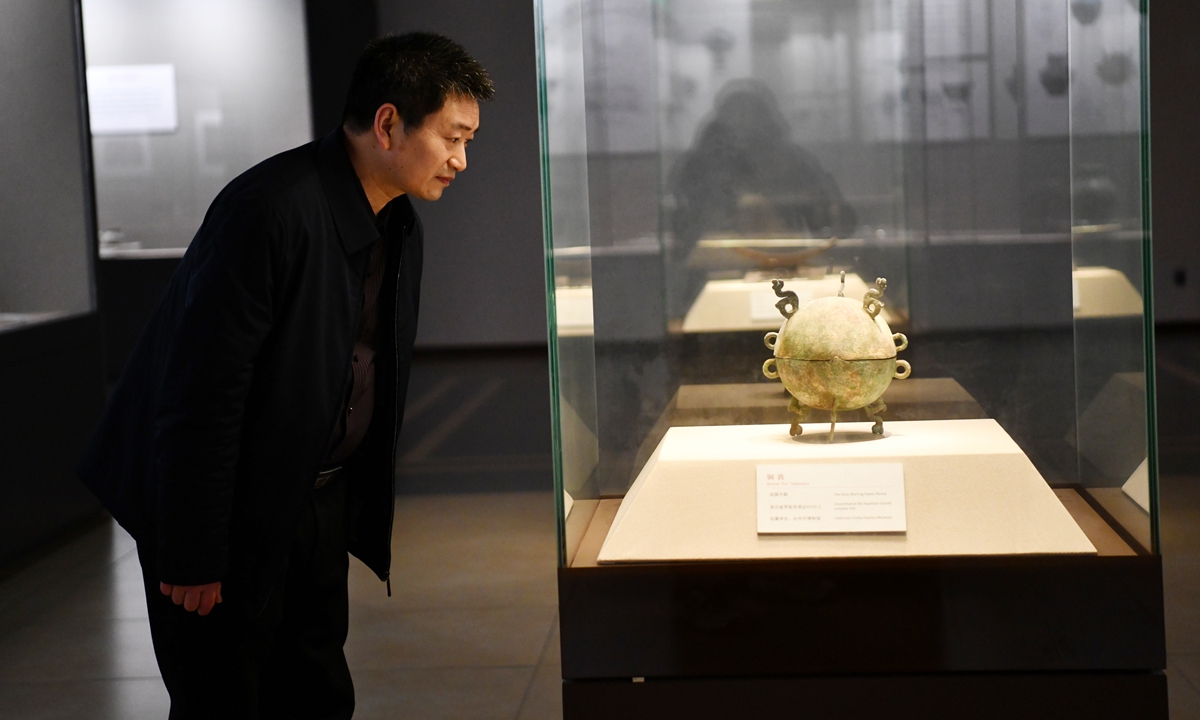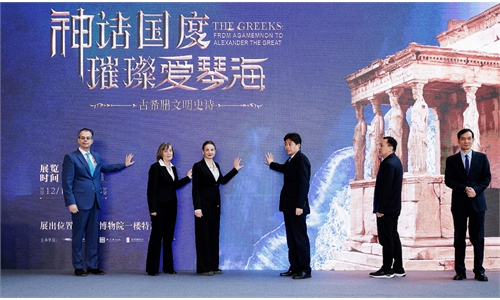ARTS / CULTURE & LEISURE
China, US extend memorandum combating illicit relic trafficking
Move holds exemplary value for the world, says expert

A cultural relic unearthed in the Luojiaba Site Photo: VCG
China and the US have jointly announced the extension of the validity period for a governmental memorandum of understanding (MOU) aimed at preventing the illegal entry of Chinese cultural relics into the US. This collaborative effort, effective this Sunday, seeks to enhance crackdowns on relic smuggling through international cooperation.Originally established on January 14, 2009, the MoU focuses on restricting the import of archaeological materials spanning from the Paleolithic Age to the end of the Tang Dynasty (618-907), as well as statues and mural art over 250 years old. Previously, the MoU underwent extensions in 2014 and 2019.
Huo Zhengxin, a law professor at the China University of Political Science and Law, told the Global Times on Thursday that the move is crucial in curbing the illicit outflow of Chinese cultural relics and also contributes to stabilizing and easing relations between both nations while fostering friendship among their peoples.
In addition, "the extension holds great practical significance and exemplary value to the world as the US is an important market for cultural relics and China is one of the countries that boast fruitful cultural relics globally," noted Huo.
According to the National Cultural Heritage Administration (NCHA), a total of 504 sets of Chinese cultural relics lost in the US have been successfully returned to China in 15 batches.
The returned items include a Neolithic jade gui (a sapphire colored ax), a jade bi (a disk-like ornament) from the Warring States Period (475BC-221BC), and a paleontological fossil as well, all of which are now in the collections of public museums in China.
During the period from 2009 to 2024, the year 2019 marked the largest return of relics. In total of 361 relics were returned to China from Indianapolis, the US.
"This is [the extension] a demonstration that China and the US, as two major powers, are willing to and capable of collaborating in the field of cultural heritage by jointly combating illegal trafficking of cultural relics," said Huo, who said that the two countries have set an example for global cooperation in fighting against the theft, looting and smuggling of cultural artifacts worldwide.
The extension of the MoU's validity period is seen as a crucial step in safeguarding the shared cultural heritage of humanity, the NCHA emphasized on Thursday.
"China and the US provides solid legal protection for the repatriation of illegally trafficked Chinese cultural relics to the US," Zhang Yue, a vice chair of Interest Group on Cultural Heritage and the Arts, American Society of International Law in the US, told the Global Times on Thursday.
Zhang said that illicit trafficking of cultural relics is considered one of the major transnational organized crimes which has attracted worldwide attention. The recovery of lost cultural relics requires evidence and, more importantly, legal basis. China is one of the countries most severely affected by cultural relic smuggling, while the US is one of the largest destinations for smuggled cultural relics globally.
"The renewal of the MoU will continue to effectively combat crimes related to the theft, looting, cross-border smuggling, and black market trading in cultural relics. It will also facilitate strict implementation of due diligence obligations in activities involving cultural relic transactions conducted by museums, art galleries, auction houses and intermediaries in the US," Zhang added.
The US is the not sole cooperator. As of December 2023, China has signed similar governmental agreements with 26 countries, including Italy and India.
China is determined to crackdown on cultural relic crimes in the country. According to data previously released by the Ministry of Public Security with NCHA in 2021, more than 26,000 stolen cultural relics were recovered across the country in one year.




